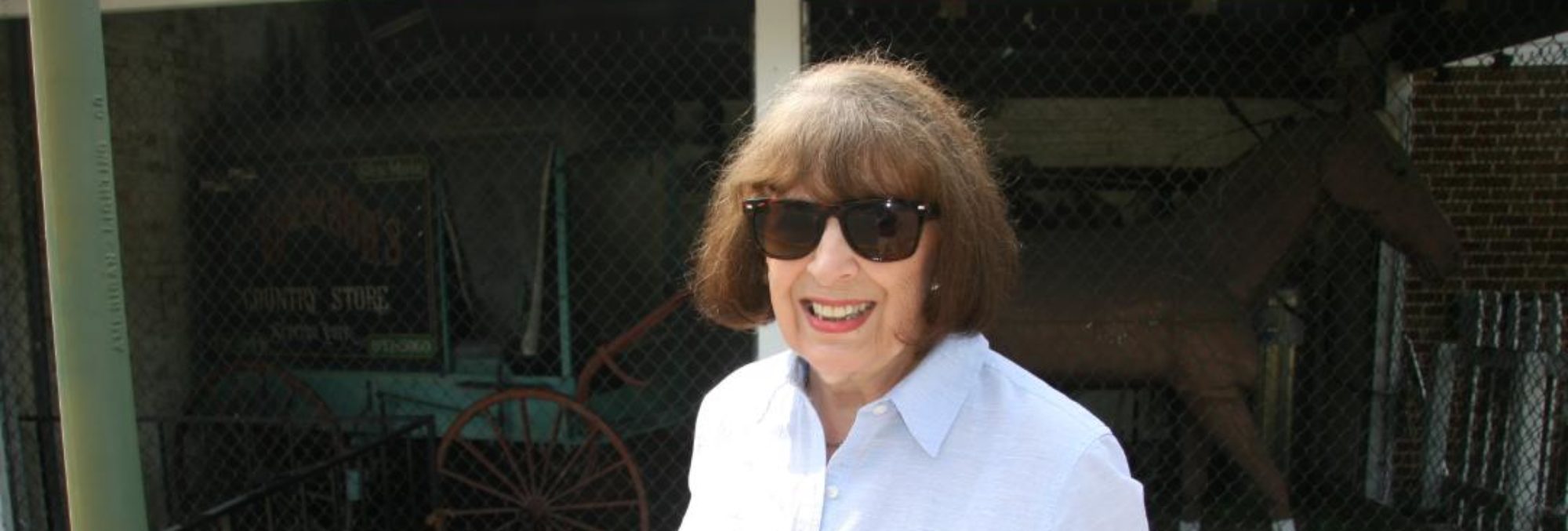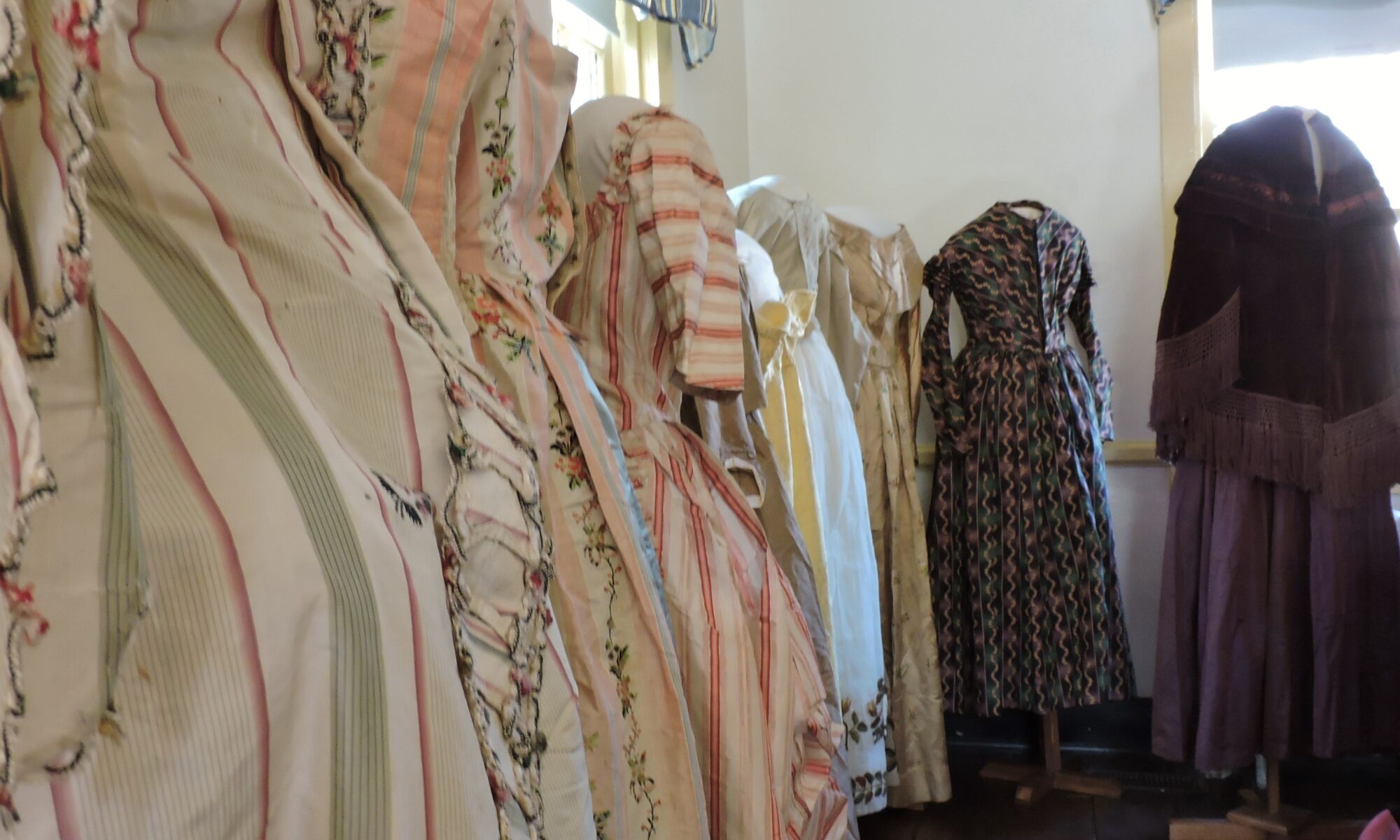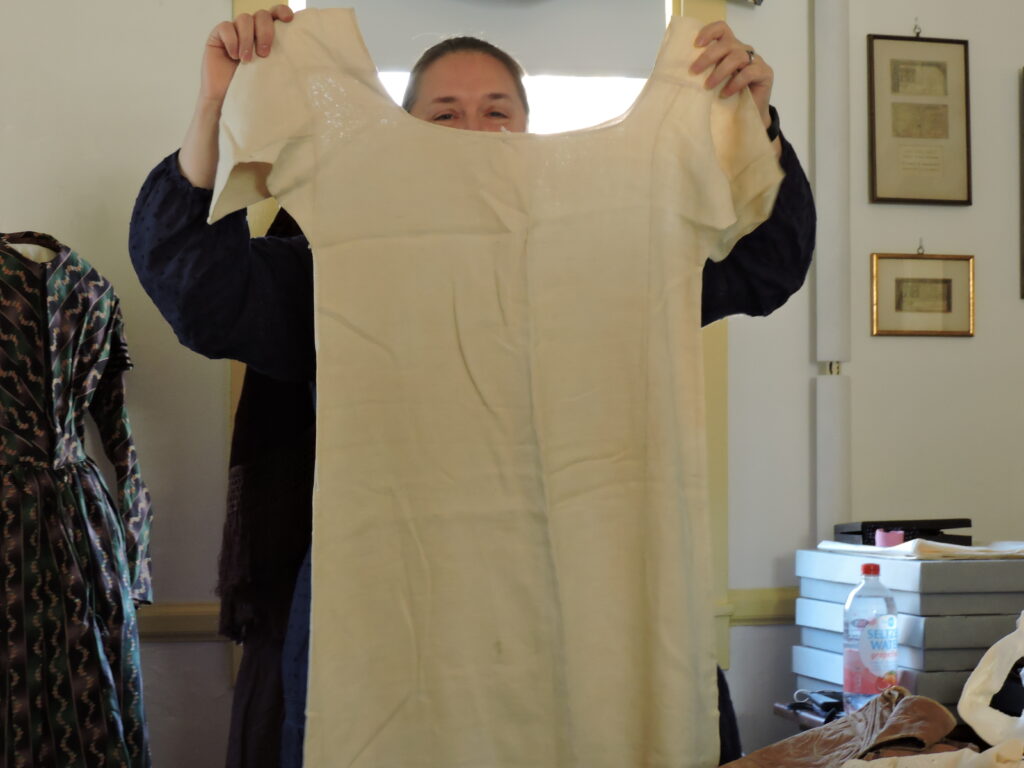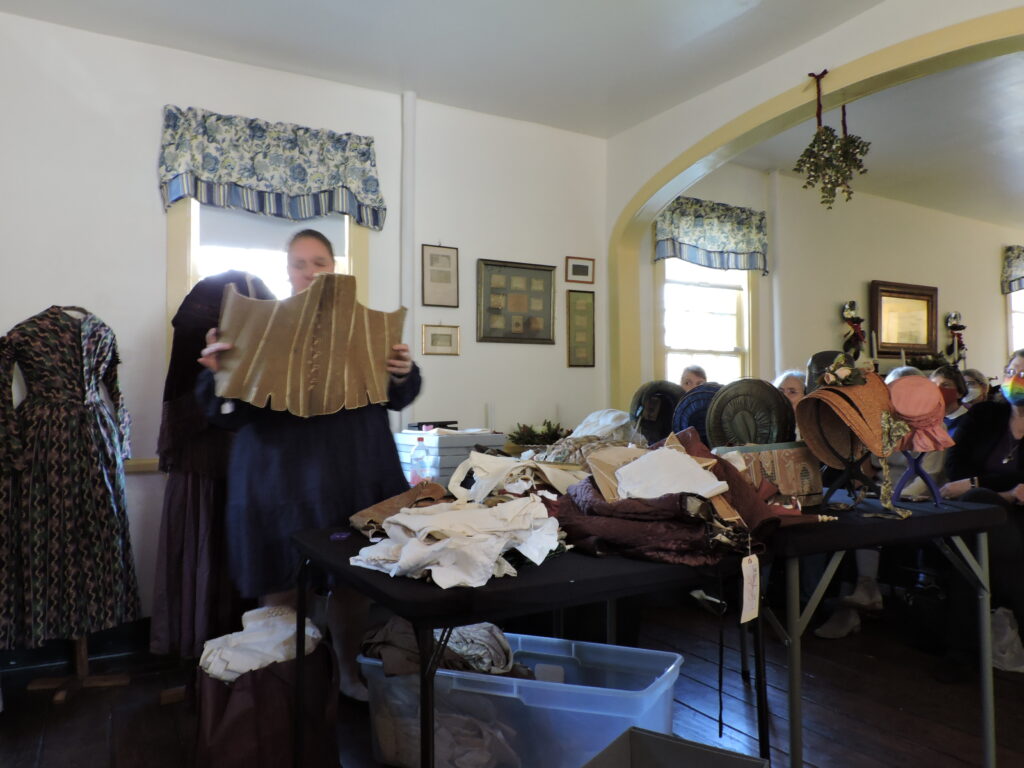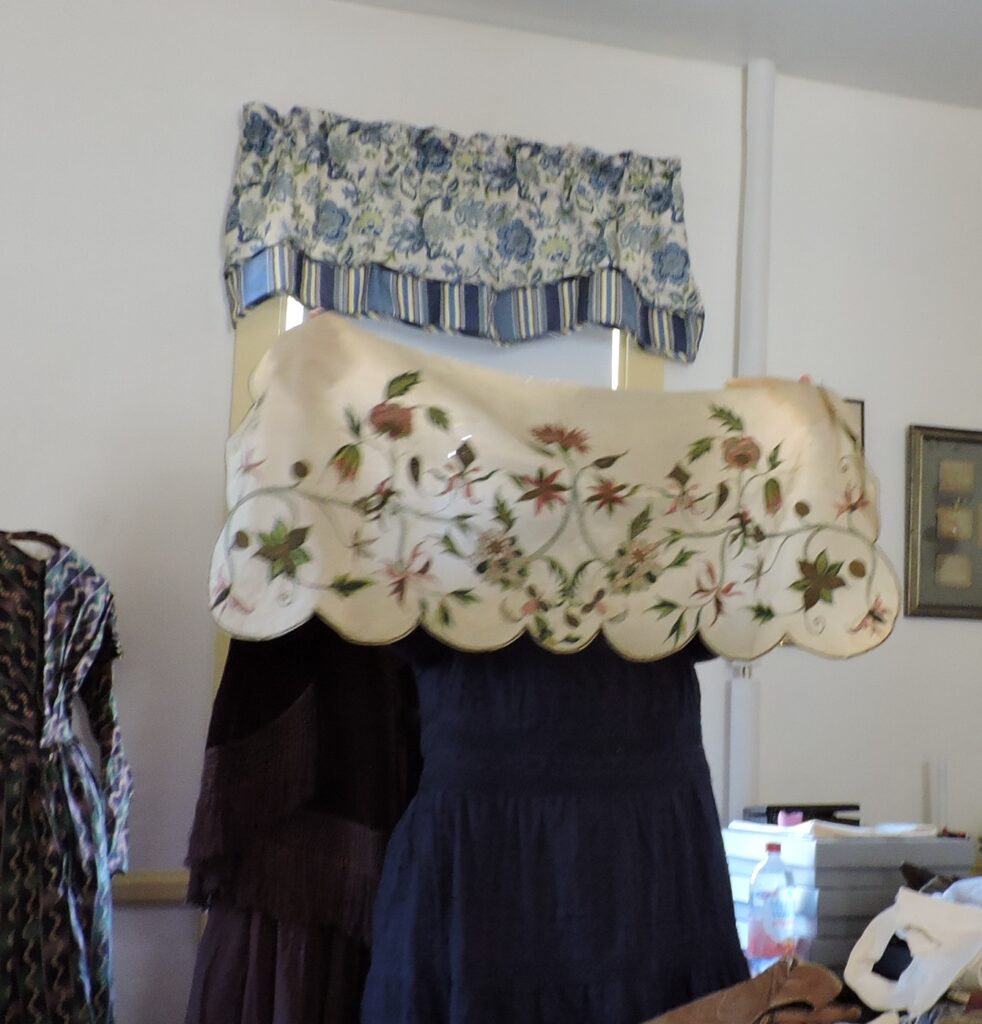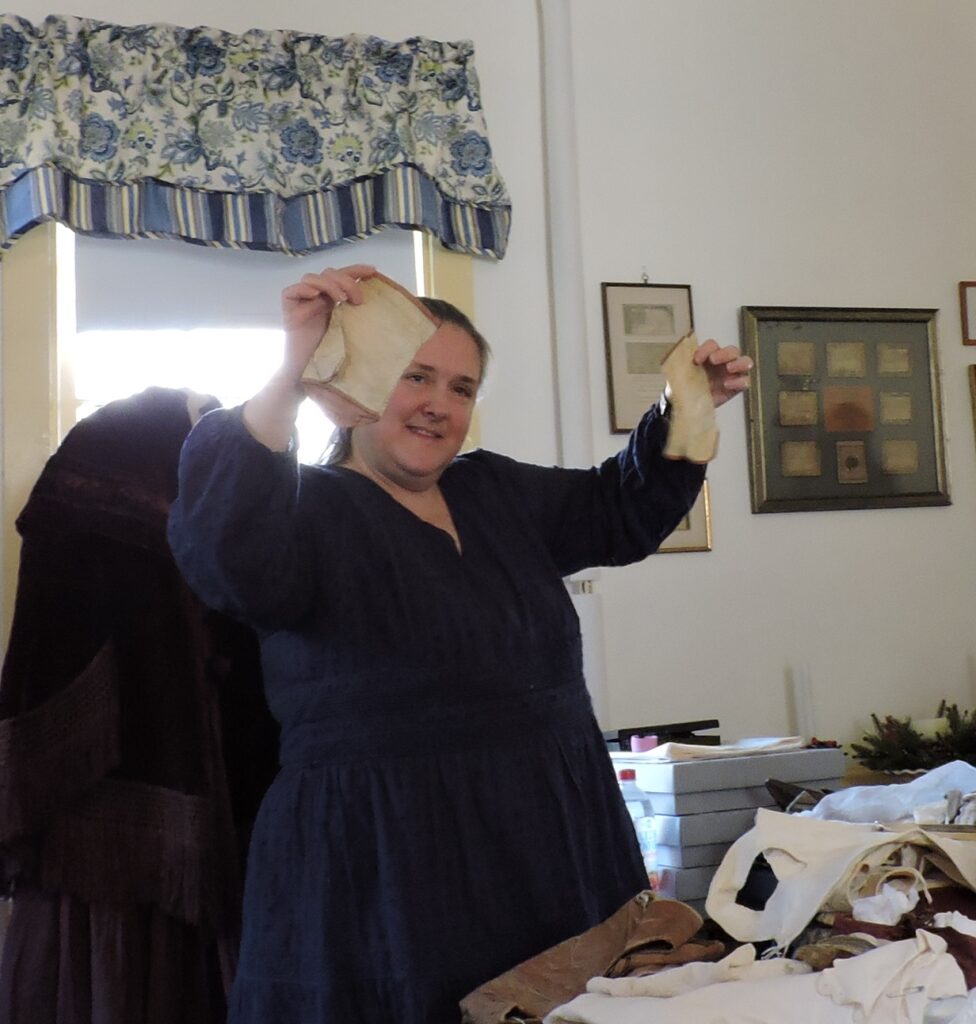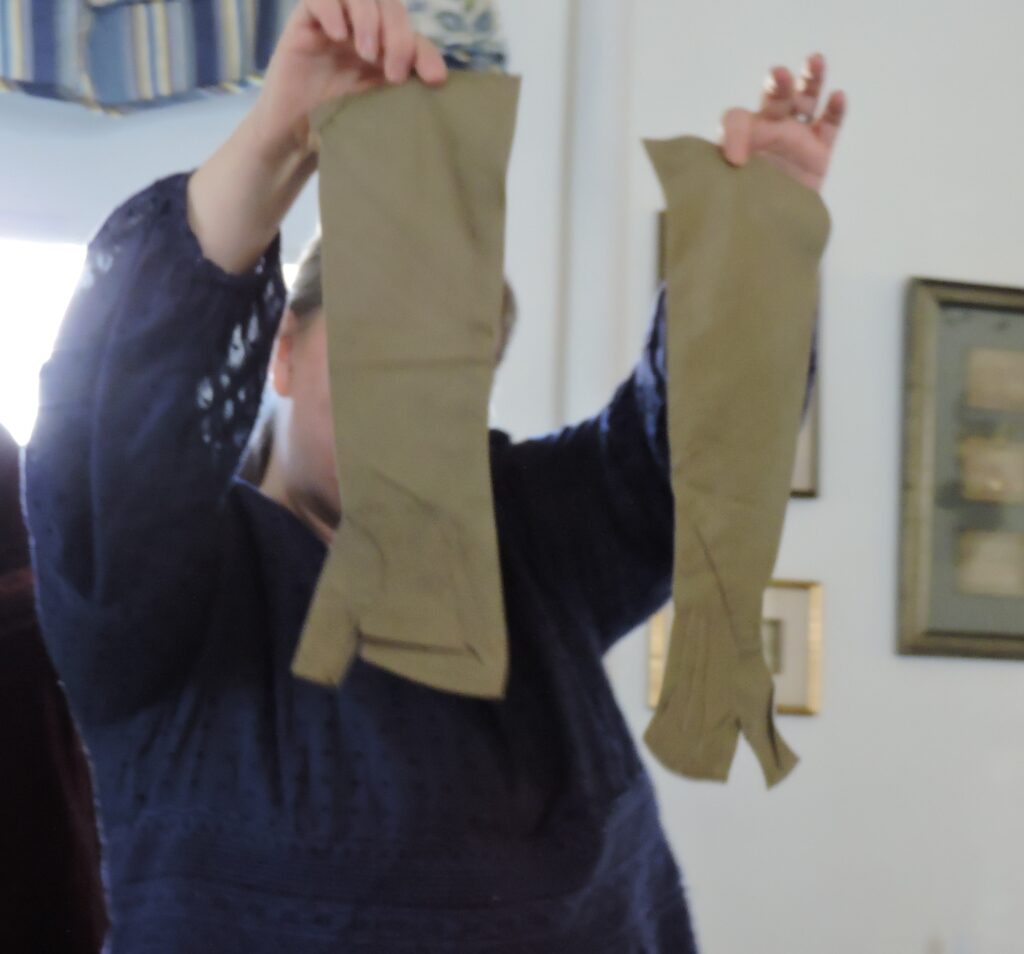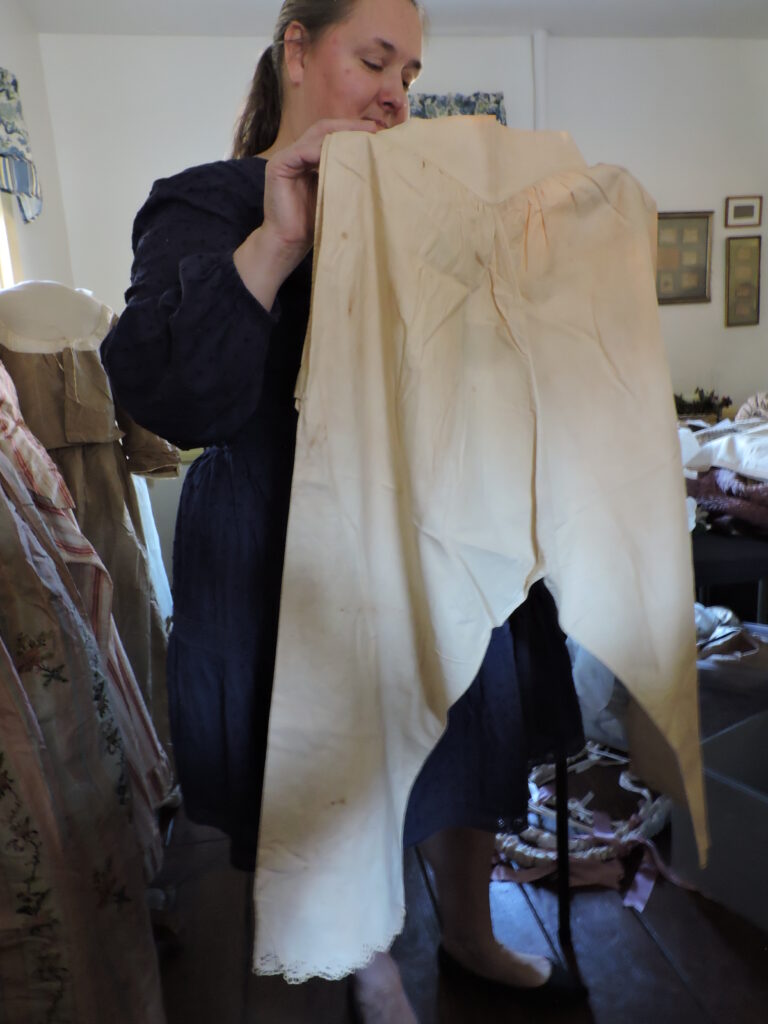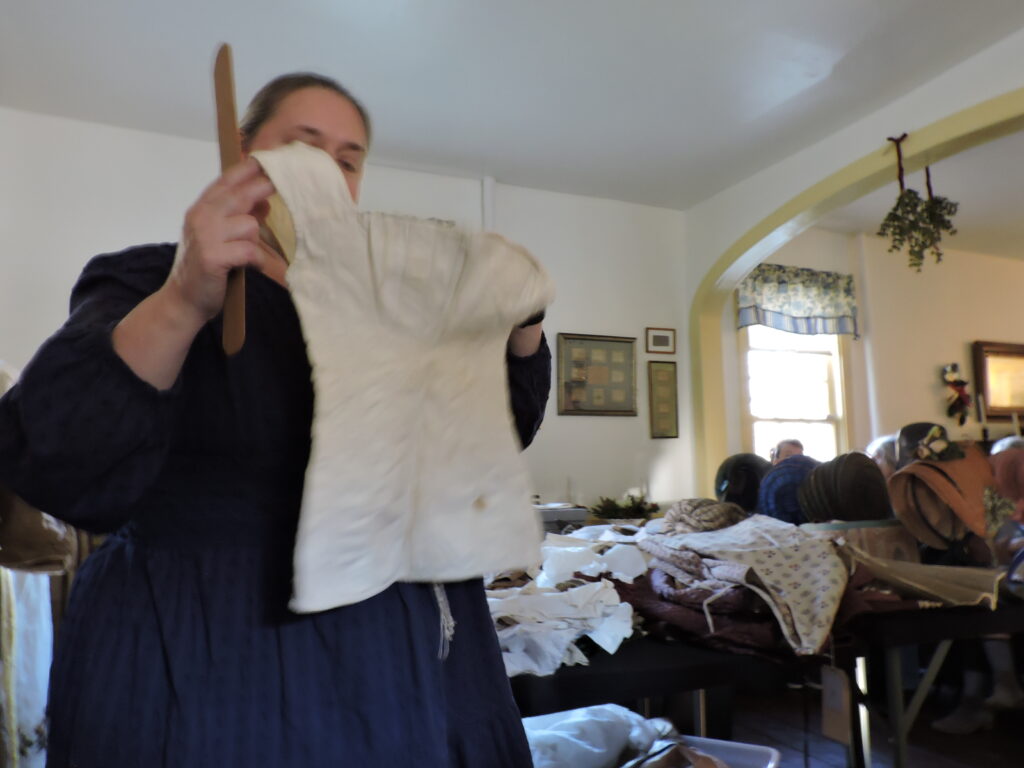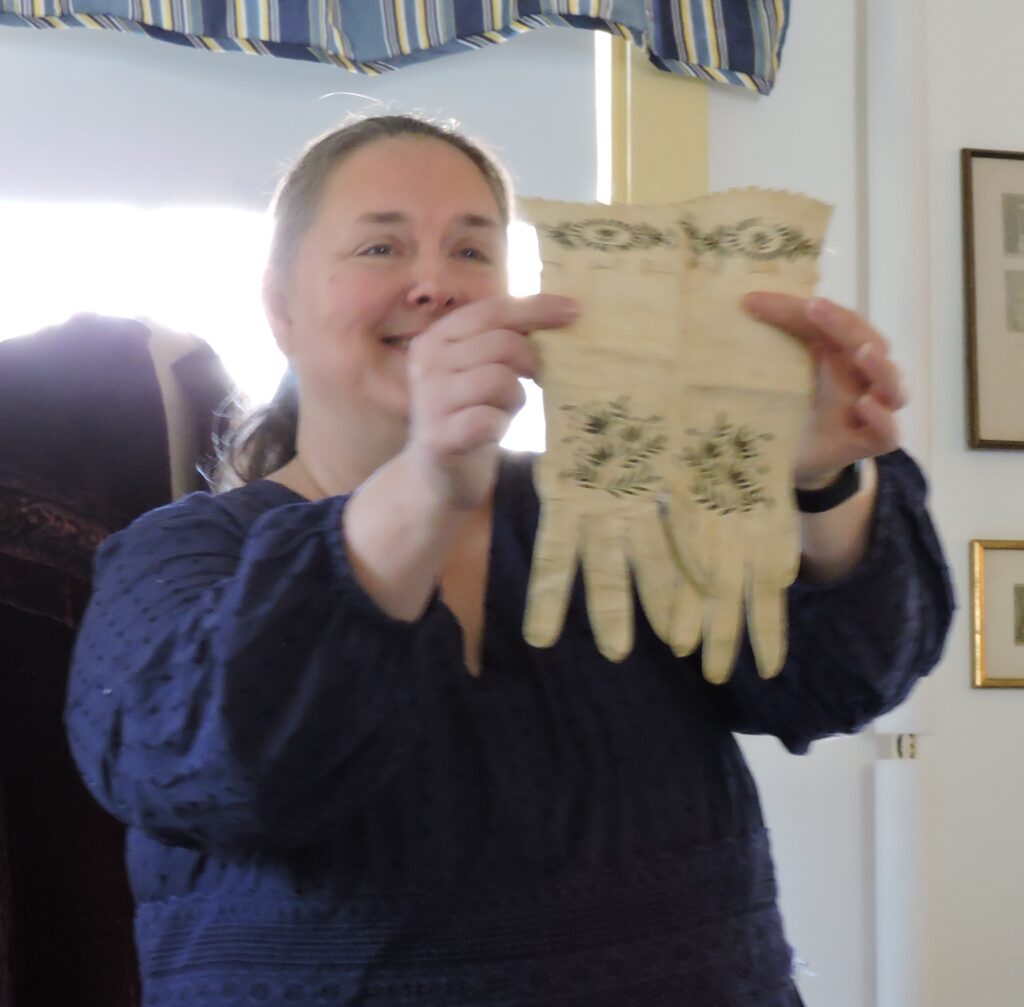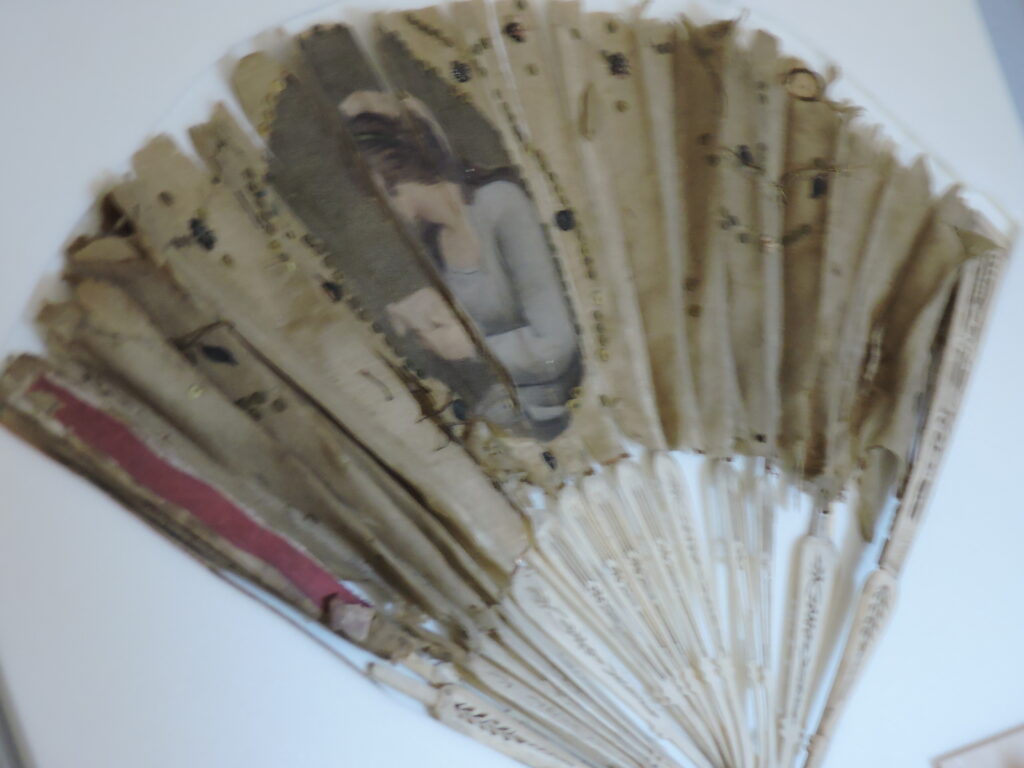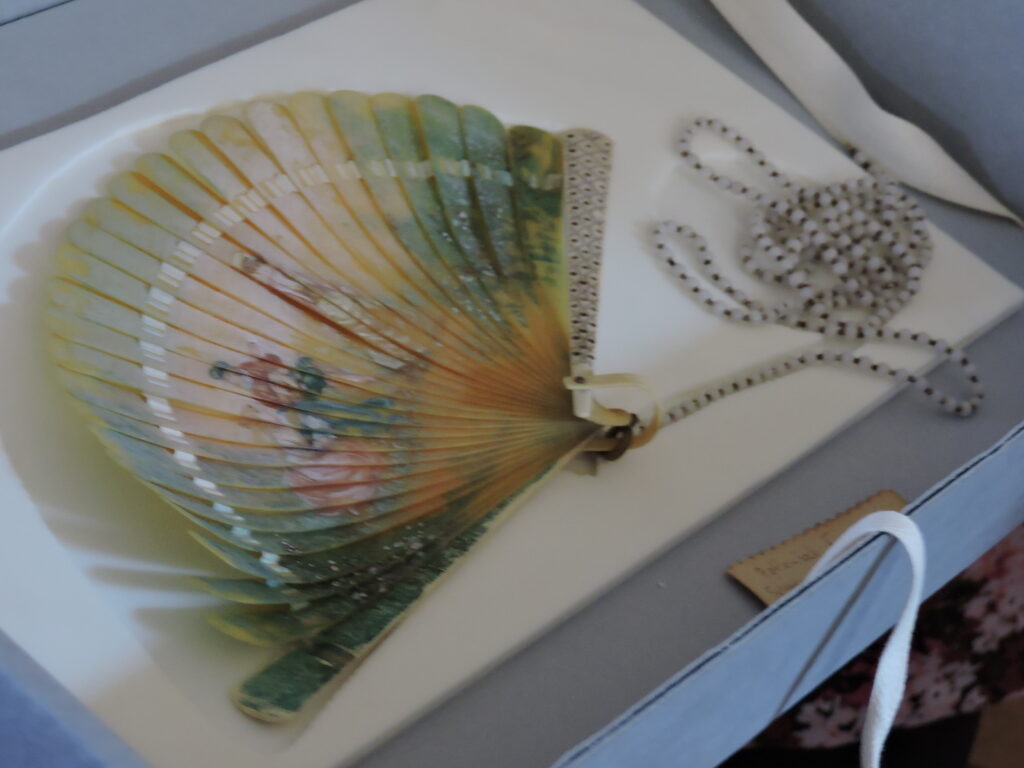AROUND THE PARK AGAIN by Sharon Lee Tegler

Brought to you by Jing Ying Institute of Kung Fu & Tai Chi
There was a stir of excitement the moment attendees stepped through the door at The Rising Sun Inn. Even while taking their seats, guests spied fashion historian and collector Heather Hook assembling her display of women’s clothing from pre- and post-Revolutionary America and were thrilled by the sight.
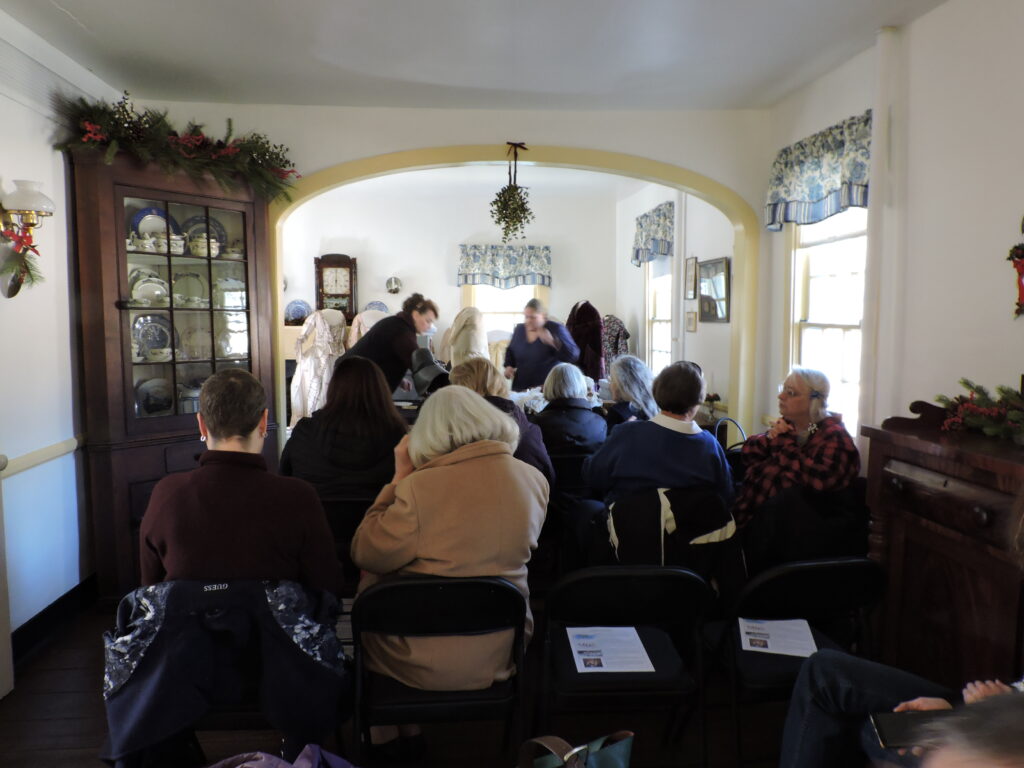
Susan Giddings, volunteer docent and Grant Management Chairperson for Rising Sun Inn, welcomed everyone while outlining the history of the farmhouse built in 1753 by Edward Baldwin. Located on the road used by General George Washington and the French Major General Comte Jean de Rochambeau during the Revolutionary War, the farmhouse saw much history over the next 100 years as a residence and an inn which also served as a post office, stagecoach stop, public meeting place, and tax collector’s stop.
In 1916 the Ann Arundel Chapter of the Daughters of the American Revolution were able to acquire the much-degraded property from owner Bo Williams with a promise to restore and preserve the farmhouse and make it a center for community history and projects. The building became the DAR Chapter House as well as a historic house museum. It served as a Red Cross Work Center and a Recreation Center for Ft. Meade soldiers during World Wars I and II and, later, as a Tea House, drawing visitors from all over the world.
Giddings next had the honor of introducing Heather Hook as guest speaker for the latest installment of the Inn’s Tavern Talk and Tour Series. She’d first appeared at Rising Sun Inn for a similar event 20 years earlier.
A historic reenactor and collector of original women’s clothing dating from the 1700’s, Hook maintains a collection numbering some 5,000 pieces with most from the Civil War era. She opened her presentation by explaining how she got started.
“I’ve been collecting since my first year of college,” she said. “I had a boyfriend who was into Civil War reenacting, and he asked me to join in. Figuring anything worth doing was worth doing well, I began researching books on ladies’ clothing from the 1860’s and visiting museums. When I went to an antiques shop and found my first dress, I was just in awe that anything that old still existed. I’d simultaneously been gifted a garment from the 1890’s that had belonged to my great aunt that made me feel a direct link with her and increased my interest in clothing from the past.”
After many hours of research Hook realized how fashions change over time. Her lecture covering clothing from the 1750’s through the 1850’s, by the decade, was meant to show how fashion evolved.
She began by showing dresses from the 1750’s and 1760’s prior to the Declaration of Independence. The first was a wonderful example of the standard gown worn by fashionable women from the 1730’s to 1770’s that was known as a Robe a la francaise.
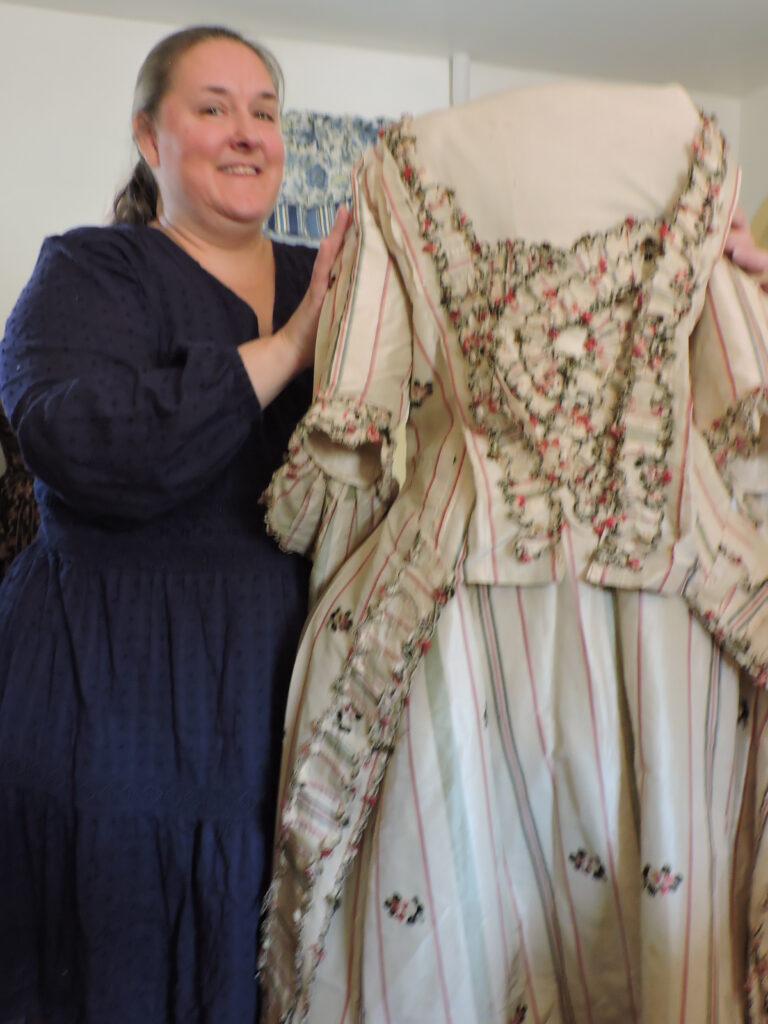
“This one is made out of silk and is trimmed with its own fabric,” she said. “It has a matching bodice called a stomacher, which is a piece that can be changed out to change the look of the dress. You can see from the back that it has fabulous Watteau pleats that fall to the ground.”
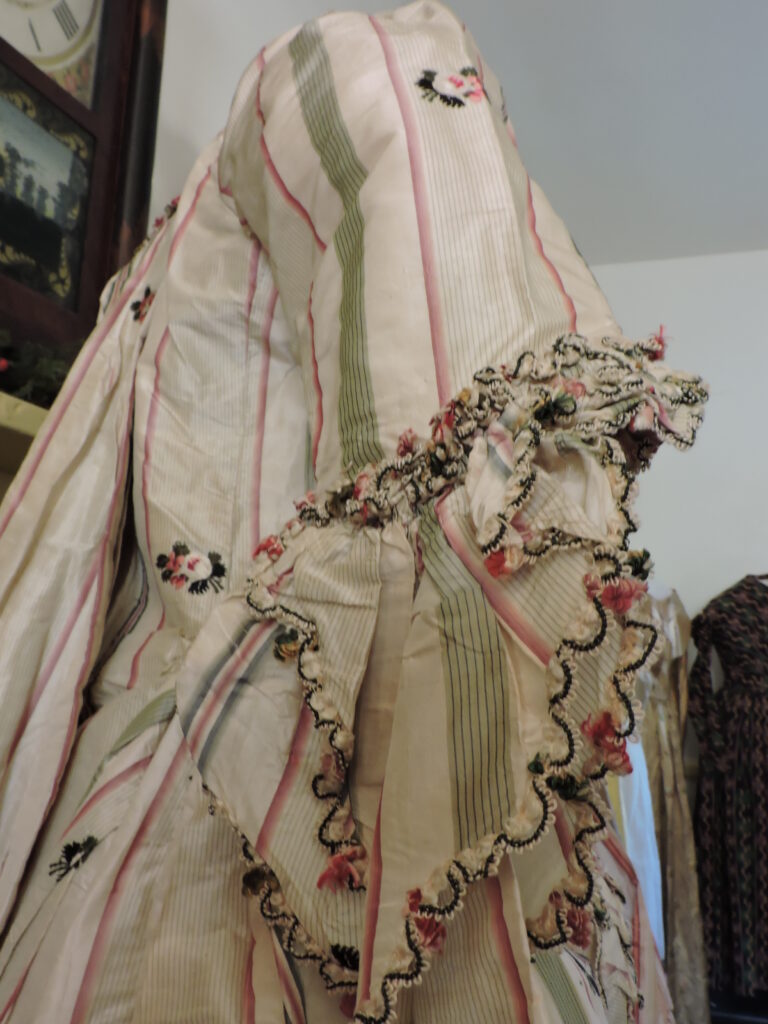
The sleeves of dresses from the 1730’s through 1770’s were intricately made and additional cuffs could be added to further glamorize the garment. 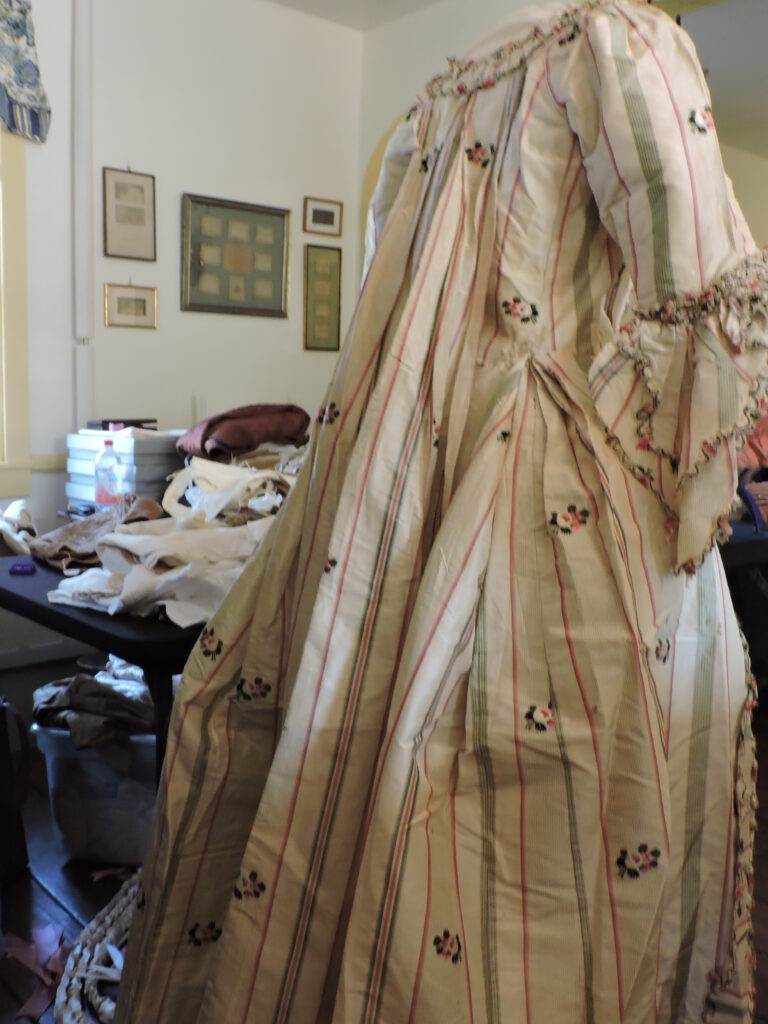
The back of the dress has Watteau pleats to the floor requiring lots of fabric.
Another fashion trend in the 1760’s was the use of quilted petticoats, an example of which could be seen in the second dress from Hook’s collection. The quilted petticoat (meant to be seen) is made from silk/satin and has extremely tiny stiches. As with stomachers, petticoats could be changed out to change the look of the dress. These dresses were worn by women from the higher classes.
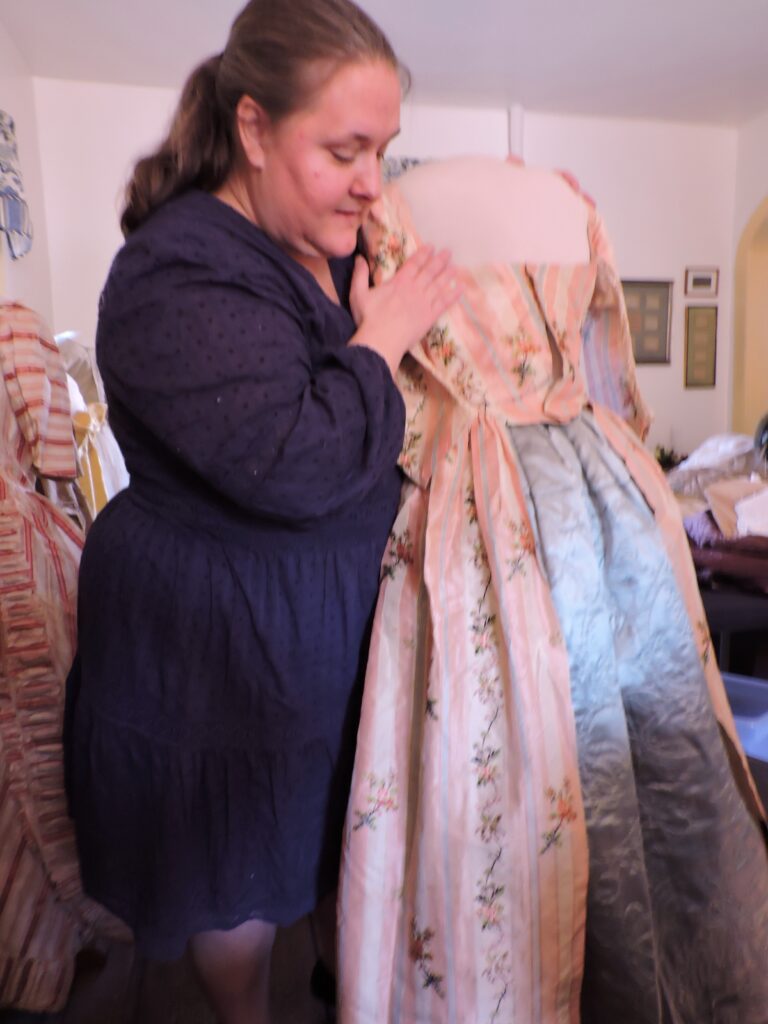
Though “drawers” had not yet been invented (so women wore none), underclothes and accessories were important to “the look”. Cotton shifts were worn under the extravagant garments as were corsets that were intended to mold your body into a desirable shape. You would also wear a pair of pocket hoops (paniers) on either side of the hips. All of the dresses had open slits so you could put your hands through to the hoops where you would keep your incidentals.
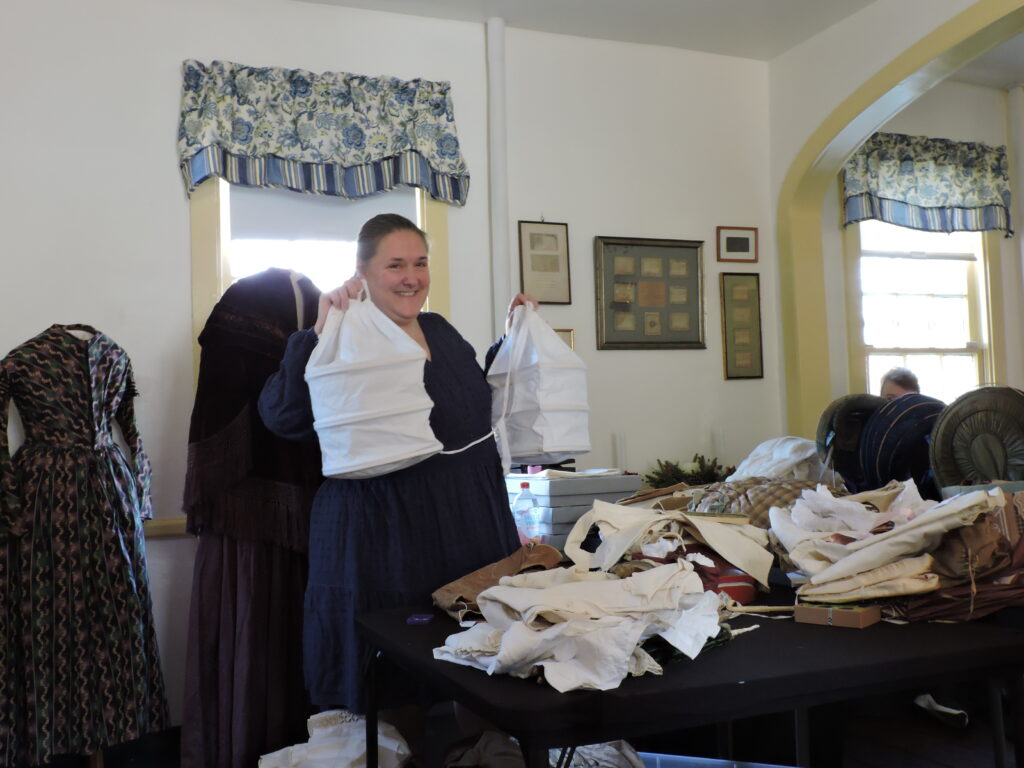

Shoes were a very important accessory and were made of satin. Some came with a wooden platform that the shoe rested in to keep it above the dirt and/or dry during periods of rain.
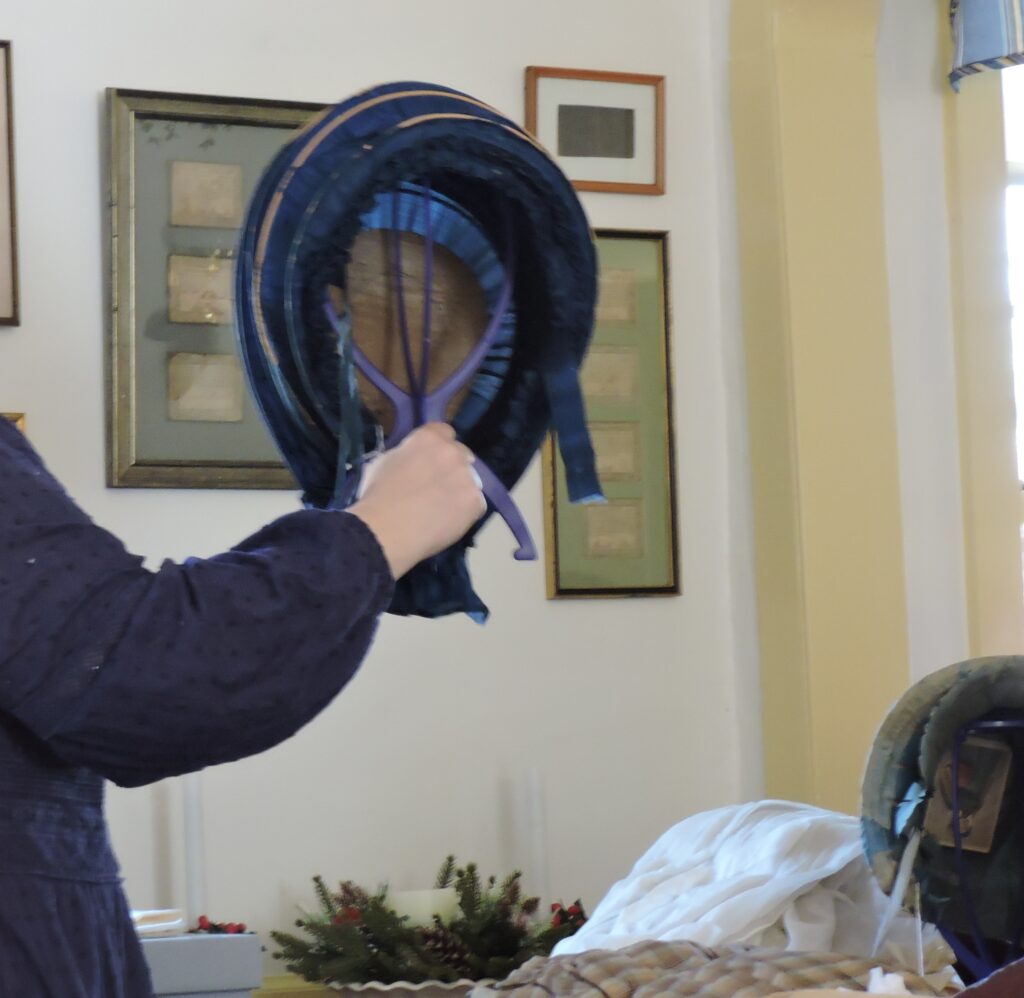
Hats, known as calash bonnets, were equally important for the well-dressed woman. Voluminous in size to accommodate elaborate hairdos piled high on the head, calashes had cane or whalebone inserts that expanded as the hair expanded.
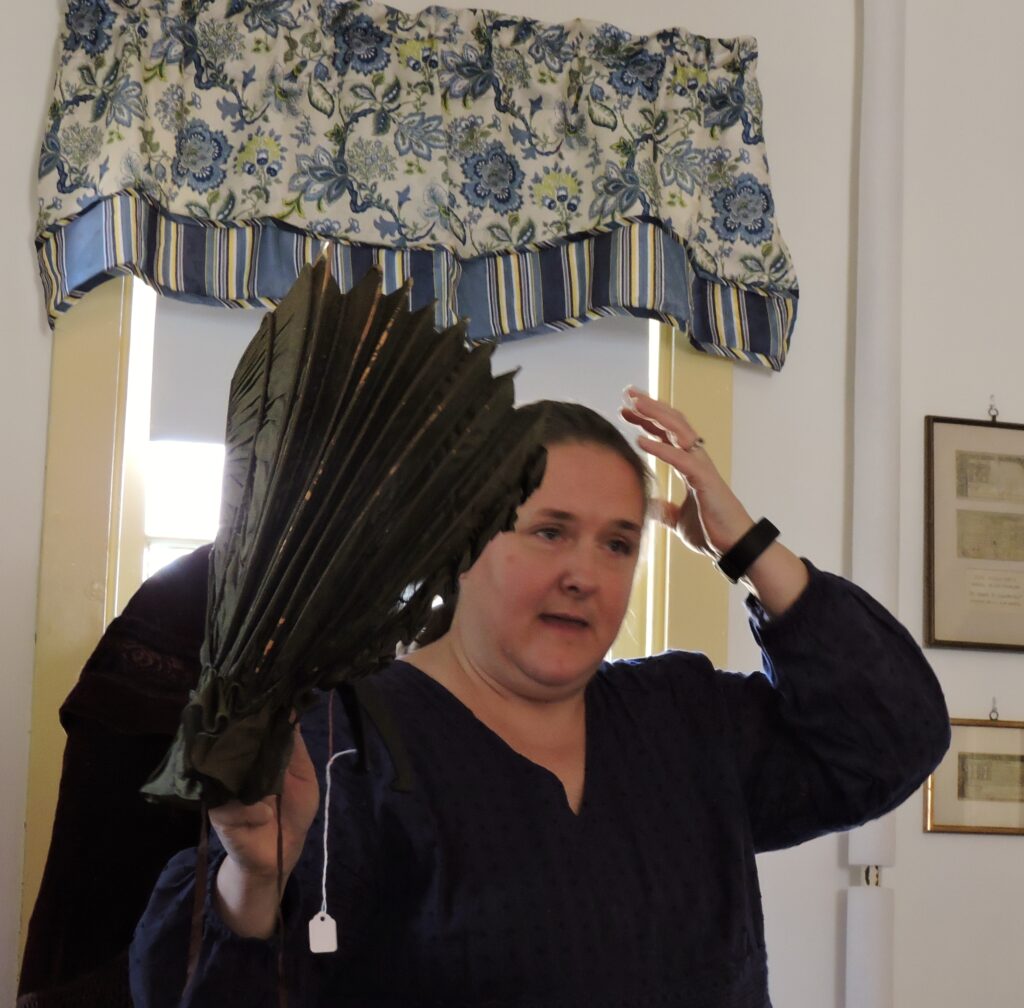
Calash fabrics were predominantly silk or satin.
Other accessories included purses which tended to be small and delicate with intricate embroidery sometimes created using metal threads.
It was in this era that fans achieved prominence as a fashion statement. The artwork on hand painted fans from the mid-1700’s tended to be beautiful with decorative elements that could include ivory. The fans were large but in later decades, they would become smaller.
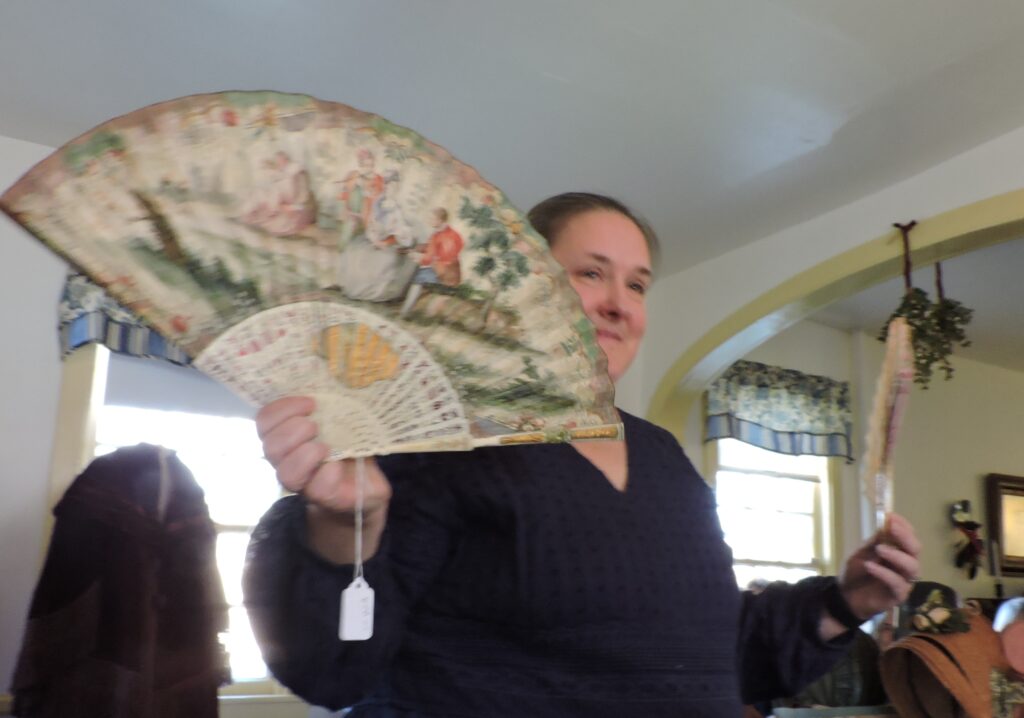
By the 1770’s things were changing as the public was less influenced by England and America was becoming more its own country. The next dress shown by Hook was worn in 1778 as the wedding dress of Mayflower family descendant Sarah Bass who married Dr. Ebenezer Alden, also descended from a Mayflower family. It is an English-style robe done in a brocade fabric with trims created from the same material. Simpler Watteau pleats flow down the back. The fabric was probably imported from England or France. At the time, silks and satins were less expensive than cotton which was the highest priced fabric because it wasn’t made here and had to be imported.
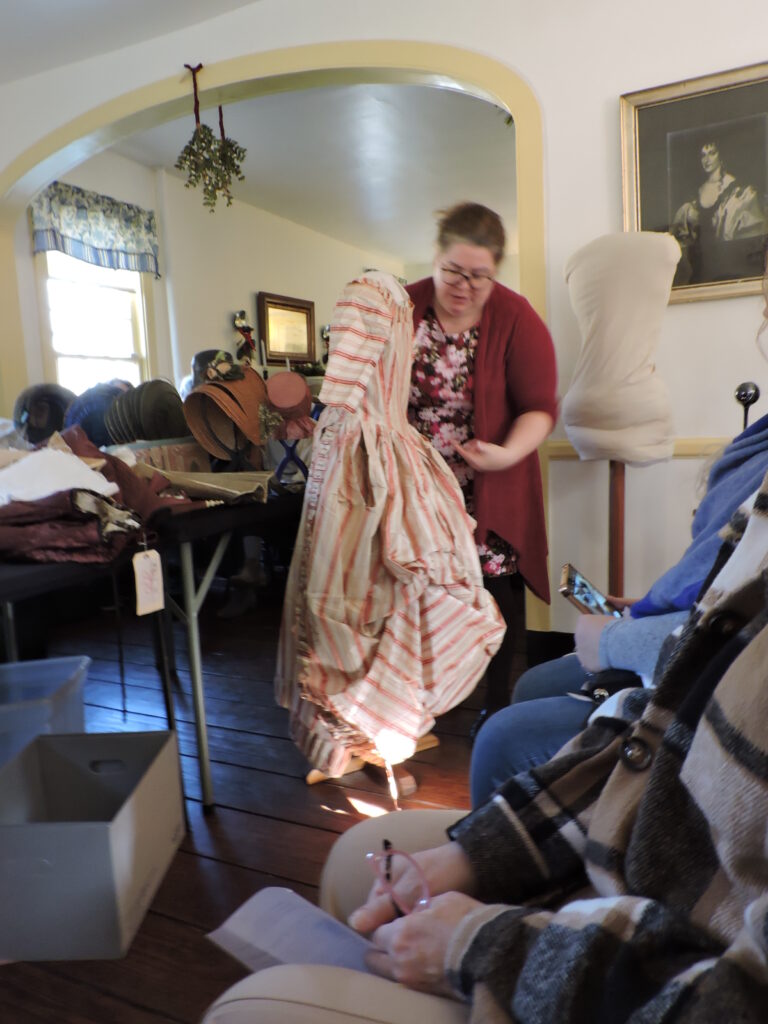
Accessories worn with all these dresses included beautifully embroidered aprons and mitts (both short and long).
By the 1780’s clothing had become less restrictive though dresses still had a train that could be adjusted by a drawstring. Shoes from this time period had smaller heels. As before, and for a long time afterward, there was no right or left shoe. Both were the same. There were supposedly stockings during this period but Hook was not able to find any examples for her collection. As before, no underwear was worn other than a shift.
Moving into the 1790’s, one-piece dresses known as round gowns were fashionable. There was an emphasis on the back of the dress with a slight bump at the back descending into a train. The one shown was worn by Sarah Pennock from Pennsylvania.
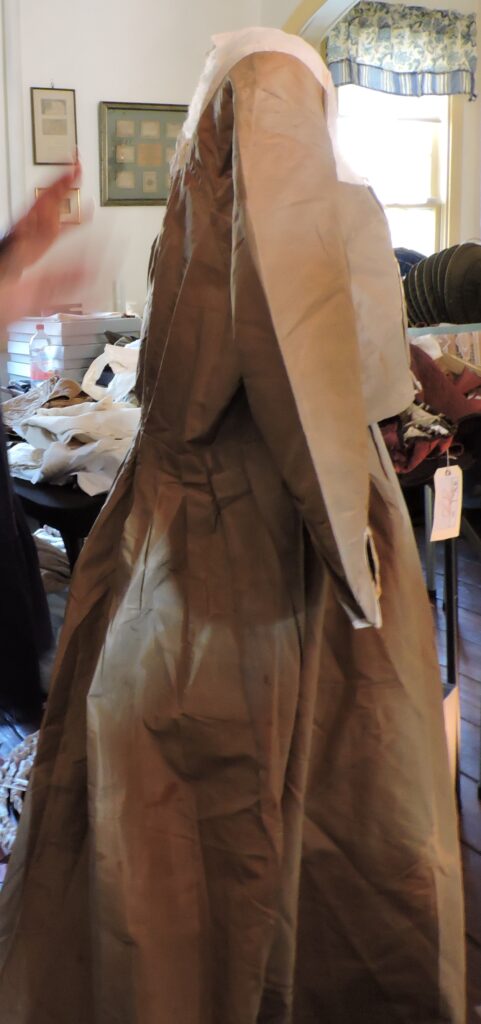
An emphasis on the back of the dress included a bump as pleats descended into the train. 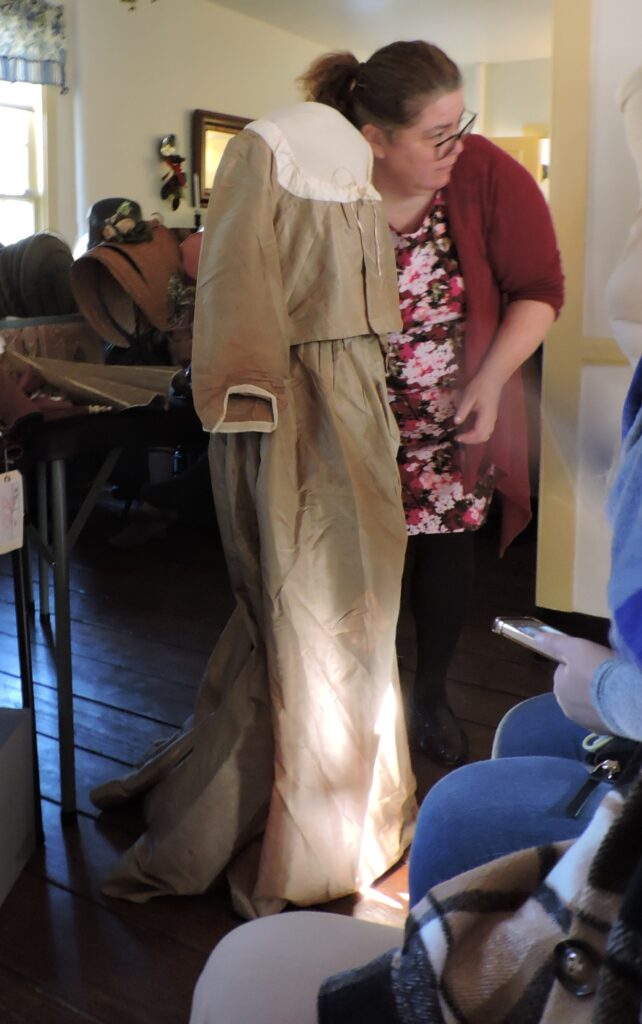
Round gowns were more comfortable to wear.
The 1800’s ushered in a risqué era of fashion known for it’s “barely there” gowns that featured empire waists and short bodices that barely covered the breasts. The dress from Hook’s collection was made from lightweight silk for evening wear. She believes the sleeves may have been added later.
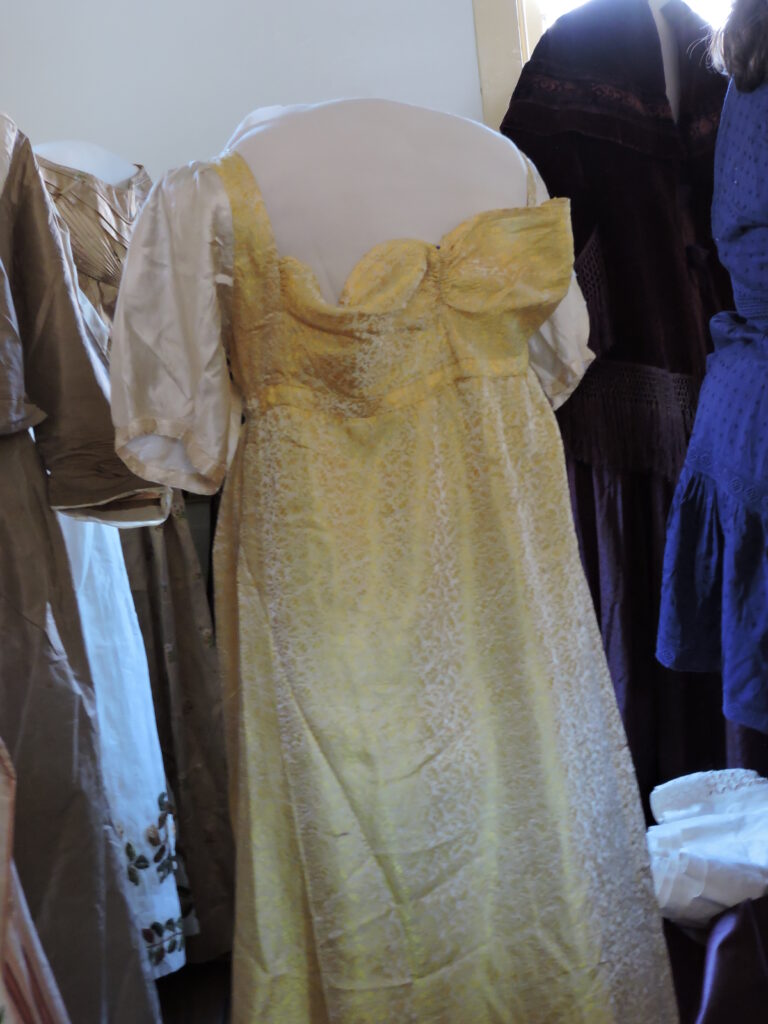
The 1800’s also saw the introduction of underwear. Corsets became more structured with wooden pieces called busks running down the center to separate the breasts. Gloves, often made from Kidd, replaced mitts and bonnets became smaller.
Moving into the Victorian era of the 1840’s, dresses became softer and more rounded with very full sleeves and bonnets became smaller and more casual. Toward the 1850’s there were more conservative American-made dresses created from wool/silk blends in varied and attractive prints.
Last but not least, Hook shared a splendid mid-19th century dress of eirjohn silk taffeta with a matching cape. A number of petticoats would have been worn beneath the dress.
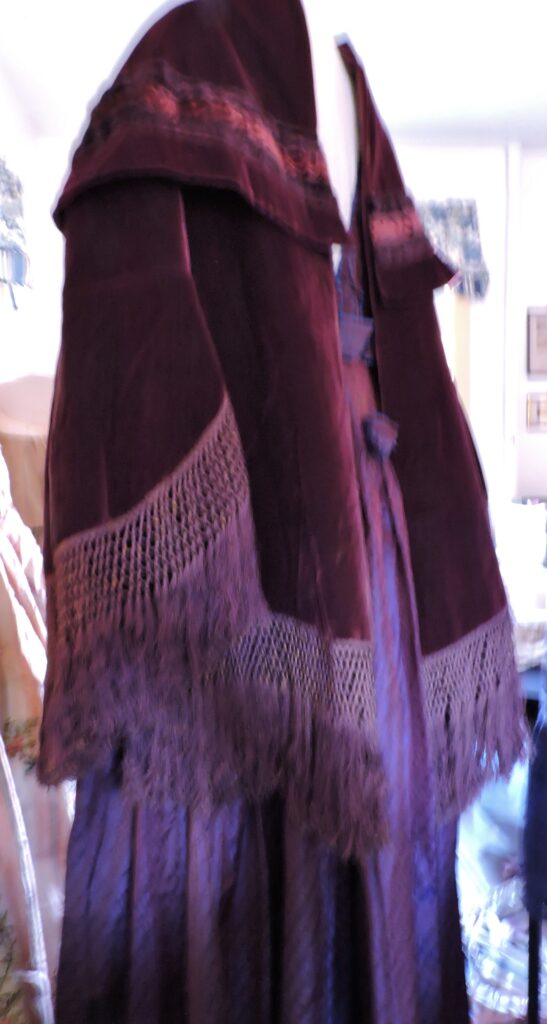
Following much applause and appreciation for Hook’s presentation from the audience, Susan Giddings concluded the Rise and Fall of Fashion event by showing off three fans from Rising Sun Inn’s own collection that have not been on display for many years. The Inn recently received a grant from Americana Corner to conserve the fans and were able to complete the preservation of one fan. Donations from individuals are still being accepted to advance conservation of the remaining two fans. Two of the three fans are shown below.
Noting that the Rise and Fall of Fashion event sold out and even more people viewed it online, Giddings thanked the audience and explained that Rising Sun Inn is a self-sustaining volunteer organization so funds raised from ticket sales are greatly appreciated. She then invited attendees to the Inn’s historic Tap Room for hot cider and sweets.
Upcoming events at the Inn include “Hopped Up!” on February 18 when guests will learn about the history of brewing in Colonial America presented by Chesepiooc Real Ale Brewery. They’ll also enjoy a brew tasting and some lite bites. There are three sessions at 1 pm, 3 pm and 5 pm. For prices and tickets, visit The Rising Sun Inn Crownsville, Maryland – Home .
Future events will include a Maryland Day tour with costumed guides on April 1, a Tea and Tour event on April 22 and a Make-Your-Own Mother’s Day Tea Cup Floral Arrangement on May 5.
Jing Ying Institute celebrates the Chinese New Year of the Rabbit beginning January 22
Jing Ying Institute of Kung Fu and Tai Chi will celebrate the Chinese New Year of the Rabbit with local performances including one for Anne Arundel County SPCA’s Paws at the Mall at 2 pm on January 22.
Jing Ying will continue celebrating with a series of free and low-cost classes and workshops.
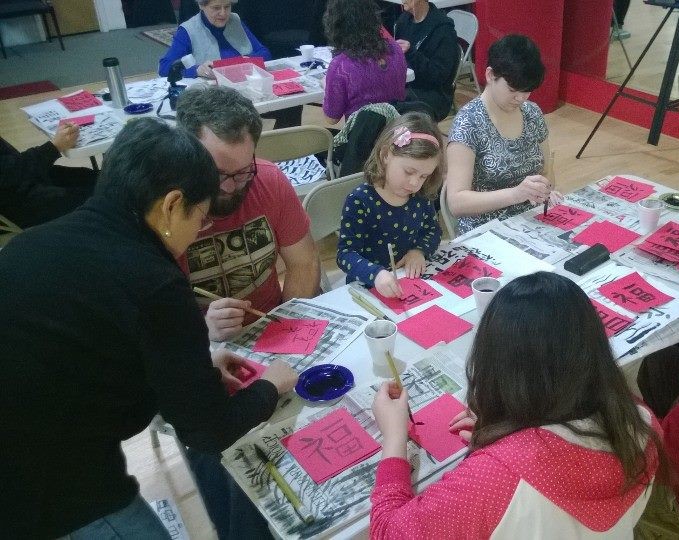
Jing Ying will also host an open house on Saturday January 28 that includes a Chinese Lion Dance, demos of kung fu & tai chi, traditional treats, crafts for children, giveaways, and door prizes. January 28 marks the start of a Jing Ying Institute’s month-long silent auction fundraiser for the Alzheimer’s Association. For more information, visit Best Martial Arts Program in Annapolis, Severna Park (jingying.org)
The column is brought to you this month by Jing Ying Institute of Kung Fu and Tai Chi at 1195 Baltimore Annapolis Blvd. – For over two decades providing martial arts training that improves cardiovascular health, strength and flexibility while reducing stress. Celebrate the Chinese New Year of the Rabbit with Jing Ying Institute beginning January 22.

